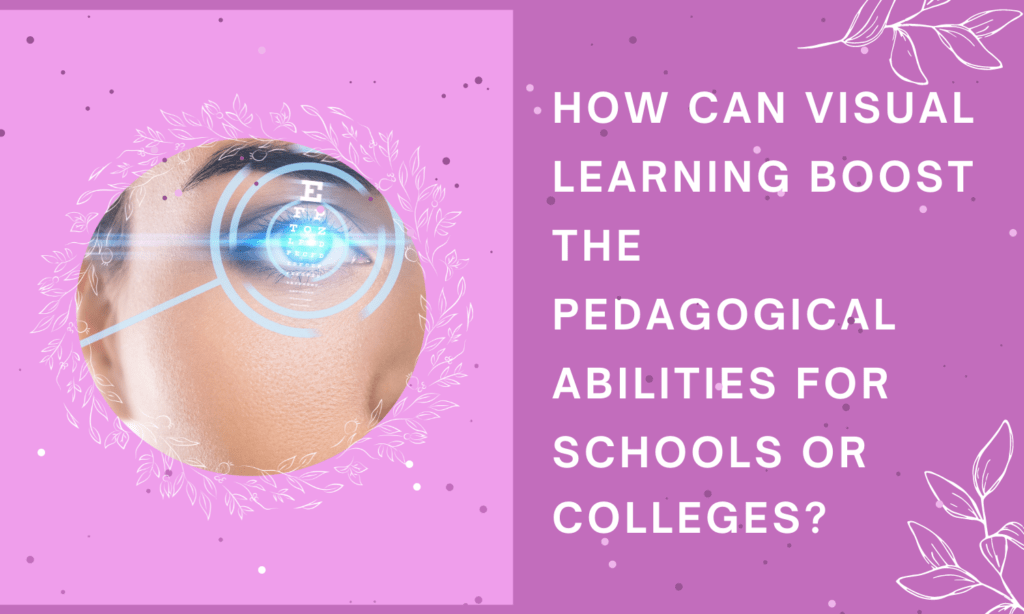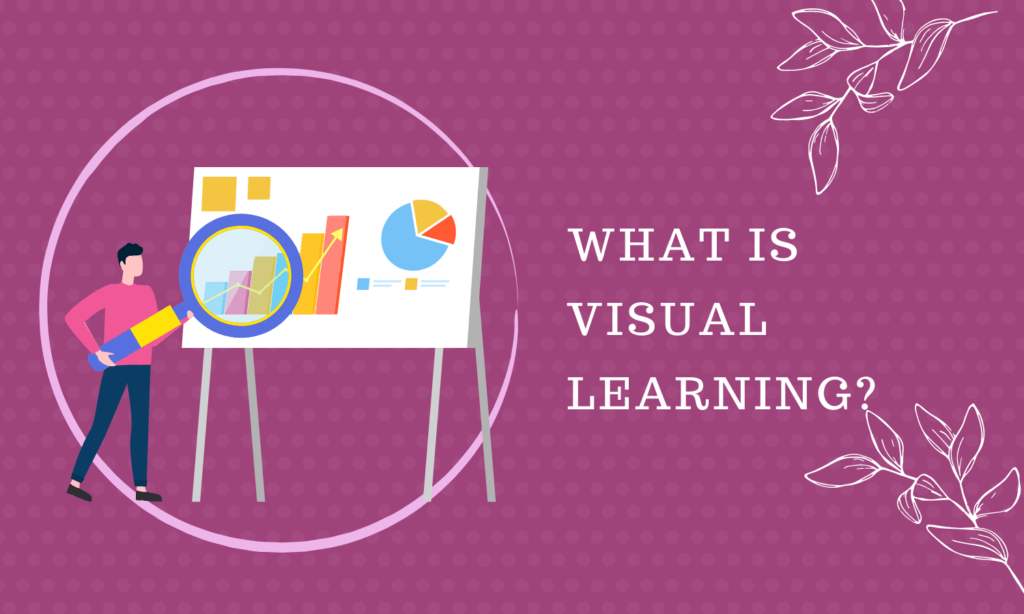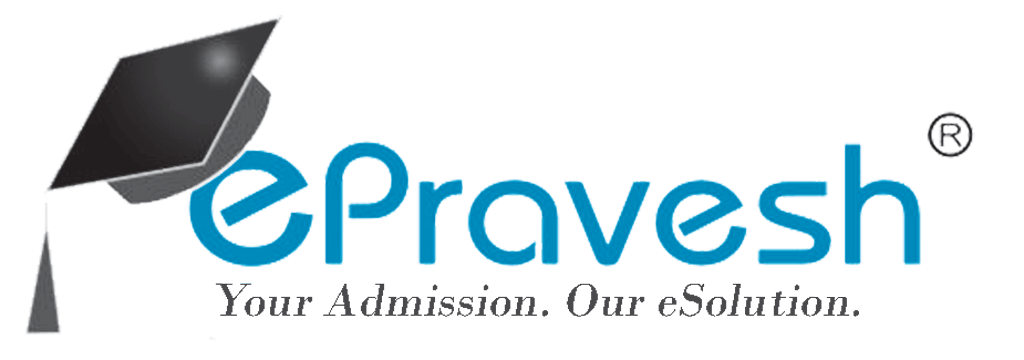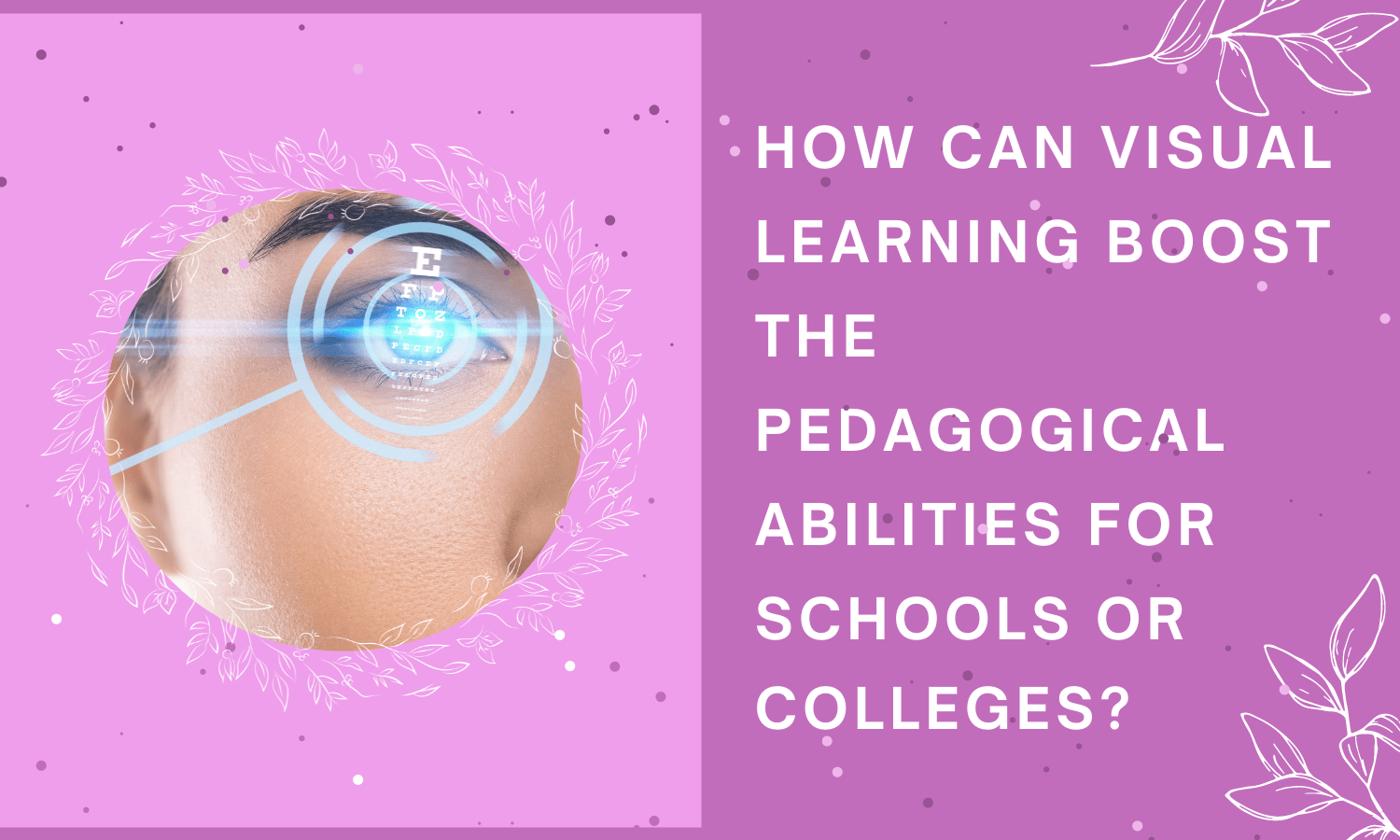
Article Contents
What is visual learning?
A picture is worth a thousand words.
As per this adage, a picture is adequate to convey complex messages, ideas or even knowledge. The need for verbal description is eliminated if a picture is shown.
Visual learning uses similar kind of ideology. The content which is based on images is used to give some sort of information. This information is known as visual content.
Such kind of information may or may not have any words written to explain what that image is trying to depict. These visual elements are drawn or designed in such a way, that they themselves are quiet enough to explain the entire concept even though it is complex.
The learning style in which the content or syllabus is taught based on visual elements is called as visual learning. Visual learning is simple to understand and can improve the learning experience for the students.
What are the types of visual learning elements?

Visual learning makes use of different visual elements or pictorial representations. These visual elements help the students in various ways.
Let us have a look at the visual elements which can be used for educational purposes in schools or colleges:
1) Illustrations
A graphical representation of a concept is called as an illustrations. When a concept is not easy to understand, these illustrations help the students to visualize it and understand it easily.
Colourful illustrations help the students to connect the theory with the objects by combining the facts with images or drawings. Such a connection helps them to memorize the topic without the need to learn it by heart.
These illustrations explain the same concept by using the power of imagination. Observing these illustrations help the students to understand the concepts quickly as also memorize them for a long time.
2) Photographs
Photographs are an inseparable part of our lives. It’s a powerful medium which can help students to connect with that photograph and imagine it.
Photographs can prove especially helpful in case of subject likes history and geography. The places or any other things mentioned in the history lessons can be understood far better by looking at its photograph. In geography, the teachers can show pictures of earth on any location on earth such as rivers and mountains, different types of coals, volcanic stones, etc.
This way, the students will be able to imagine whatever is depicted in the photograph in real-time.
3) Animated gifs
In case of online education, the students attend classes virtually. Such online or virtual platforms can be used to explain different concepts to students with the use of animated elements.
One of such animated elements is the Graphics Interface Format (gif) to increase the effectiveness of visual learning. Gifs can help to bring life into the chapters taught in the classroom.
Multiple gifs can be combined to demonstrate an experiment or explain a concept step by step. This can help to break the monotony of e-Learning as also boost the students’ power of imagination and visual thinking.
4) Infographic
Infographic is usually used to represent a process step by step. A great option for visual communication, Infographic helps to improve the cognitive ability in students.
With the help of Infographic, different points in a classroom debate can be listed; study tips or important points to remember in a chapter can be listed or any complex scientific process can be explained much easily.
Students can use Infographic in their presentations or assignments. Students can create visual essays or illustrate historical events in the chronological order with the help of Infographic.
5) Visual notes
Visual notes are a proven solution to make teaching-learning activities much easier. By using images, structures, text, connectors, images, etc. visual notes can be used to record bits of information by the students and teachers and share them easily.
Students can create mind maps to understand complex relationships or hierarchy in a concept. Such visual notes can help to organize complex concepts in a way which is easier to understand. This can prove beneficial while recalling concepts during examination.
6) Charts and graphs
Charts are used to represent a set of data in a classified and organized manner. Graphs show relationship between quantities in a two-dimensional format. The students have been preparing charts, flowcharts and graphs as assignments or in the exams since a long time.
Charts and graphs help to represent a lot of information in a precise way. Different trends or patterns which occur over a period of time can be represented with the help of charts and graphs. One of the best method to display work flows or branching, charts and graphs help to speed up the learning process without putting much pressure on cognitive ability.
7) Videos
One of the best medium of communication, animated or live videos can make a huge difference in the way education is delivered. Videos are helpful while providing elaborate explanation of a concept. Little but important details which are related to a certain concept can be explained well through the videos.
Recorded videos are very useful for students as they can be access from anywhere whenever they wish. The teachers can perform small experiments, record them and show them to the students. This would help them understand scientific concepts much better.
Videos can make virtual classroom education much interesting as these videos can be created by using images, gifs, photographs, animations or any other references. All this helps the students to understand the topic in depth. As videos help to spike up the interest of students in that subject, they would be able to enjoy studying it and thus acquire good marks.
8) Presentations
Presentations are an integral part of any school education. Presentations include a lot of images and very little text.
A presentation is a collection of multiple slides which can used to tell something in the form of a story. These slides which can be played as a slide show can help to represent certain concepts or topics in a pictorial manner.
The presentations are extremely easy to prepare and can help you to convey a lot of information in a visual format. Presentations can be used to highlight certain points from a chapter or to display the summary of any topic. Presentations display statistical information in a very organized way which is easy to understand.
What are the advantages and disadvantages of using visual learning for schools and colleges?
Visual learning seems like an effective tool for education at school and college level. But just like any style of learning, visual learning has some pros and some cons. Let us discuss them now.
Advantages of visual learning are as listed below:
• Stimulates the brain
There is a special area in our brain which get stimulated by looking at images. This sort of stimulation helps your brain to capture images faster as also to retain things for longer durations. This stimulation can be increased by using different visual elements, fonts, color combinations, etc.
• Makes understanding easier
Visual elements foster the learning ability. An elaborate and confusing concept can be shown in the simplest way which can be grasped by the students quickly. Visual learning boosts the memory of our brain thus making the learning activity much effective. Thus, visual elements not only make it easier for the teachers to explain difficult topics but also help the students to sharpen their memories and remember whatever they have learnt lifelong.
• Accessibility in online education
Visual elements such as animated images, gifs, charts, graphs, photographs, etc are easily available on internet. There are many online tools which also provide various kinds of visual elements for educational purposes. Thus, using these visual elements is not only extremely easy but also very cost effective.
• Makes education interesting
The students might get bored sue to the monotony of theory studies. As the visual elements consist of cartoon or animated images, the younger kids do find them interesting.
The usage of diagrams, flowcharts, photographs, maps, etc. make studies interesting for school and college students as well. The addition of fun element in studies, also motivate the students to focus and study more.
Disadvantages of visual learning are as listed below:
> Not suitable for auditory learners
The auditory learners depend on listening rather than watching. Such students, who are better at listening and memorizing, cannot benefit from visual learning. The students can memorize only after writing also cannot benefit from this type of learning style.
> Time consuming
Preparing visually appealing images, charts, graphs, presentations, videos, etc. or searching for the perfect photograph or map is not always easy. It consumes a lot of time and sometimes can even drain out your brain.
> Improper designs
If the teachers d not use accurate images while creating Infographic and presentation or
If they use invalid information while preparing charts and diagrams, then incorrect information is conveyed to the students. If the designs are not in a simplified manner, then they might complicate the topics even more.
> Too much stimulation
Exposure to too many colors or images for a long time may cause over stimulation in the brain. This might lead to distractions while learning and prove visual learning ineffective.
Final Thoughts
Visual learning is certainly very useful if performed in the right way. The fact that visual learning can aid the learning abilities of students have been proved scientifically. Thus it is one of the best ways to deliver education for school and college students.
Adding visual elements can help the teachers while teaching during virtual class as also can help while conducting image or video based examinations. The students need to observe the image or watch the video carefully before answering the question related to them. Such questions in which an image or video is included can be used to assess the cognitive ability of the students.
Thus, video learning is no just useful while conducting online classes but can also prove useful while conducting online examinations to assess the students in different ways. Online platforms such as Eklavvya can help you to conduct online exams which offer you the freedom of including video or image based questions for your convenience.


